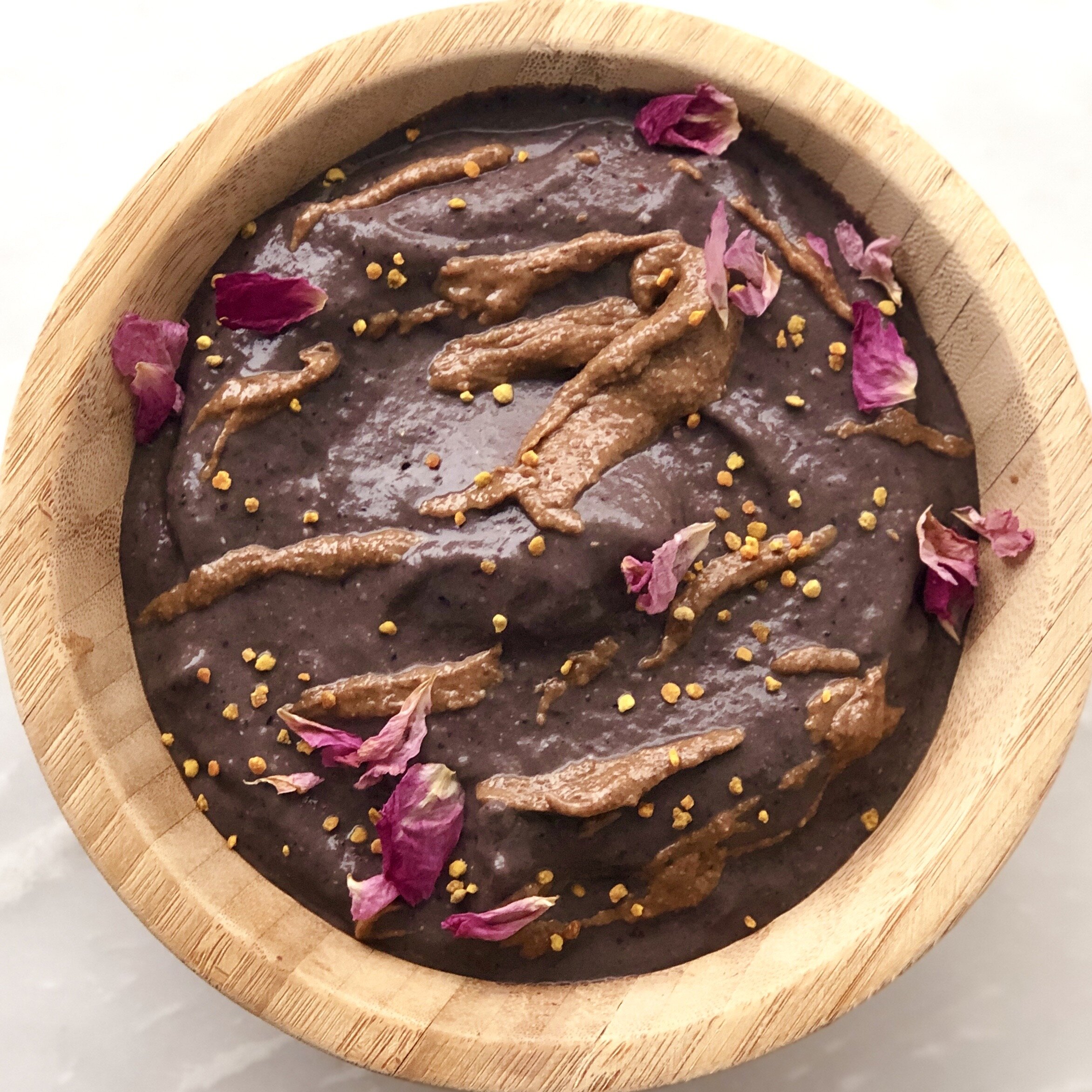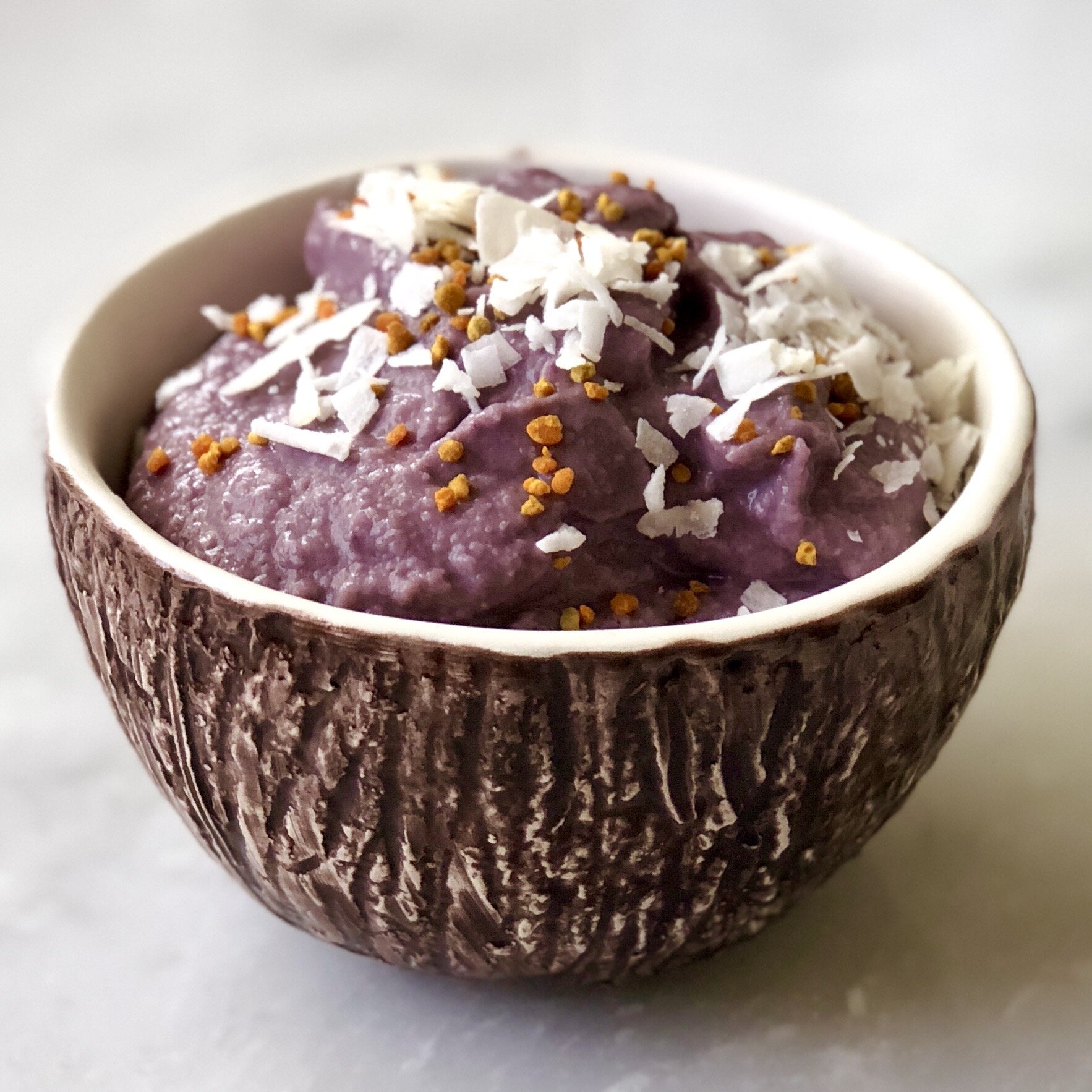Smoothies are like salads. They can be nutrient dense powerhouses … or they can be health food “traps”. Traps that trick you into thinking you are making a healthy choice but are actually loaded with junk and/or are not very good for satiation and blood sugar. So, I’m giving you a few simple steps to check off to make sure your smoothie falls into the nutrient dense powerhouse category and not the trap category. These steps can be used whether you are making your smoothie at home, or ordering it out. When ordering out it’s a little trickier since you won’t know exactly how much they are using of everything. But don’t stress, most smoothie places list the ingredient and you can work backwards from there.
Pick a veggie
I know this sounds weird, why are you putting VEGGIES in a SMOOTHIE? But trust me, smoothies are a great place to sneak in veggies that you will hardly even taste! Plus, if you bulk up your smoothie with veggies rather than fruit (don’t worry there is room for fruit too) it is MUCH easier on your blood sugar and a higher nutrient density (nutrient per calorie ratio). What this all means is that by adding veggies, you can make a more filling smoothie that will keep you fuller for longer and won’t send your insulin (blood sugar regulating hormone) into haywire mode, which, can also cause excess body fat tissue storage. So it’s a WIN WIN WIN.
How many vegetables should you add to your smoothie? There is no single right answer, but I give my clients a goal to add at least 2. Dark leafy greens are usually a must, so use those and at least one other veggie. BUT if you hate greens, pick 2 other veggies and skip those. I think 1-3 fist size portions is a good amount. Try some combinations and amounts out and see what works for you. Some of my favorite veggies to add to smoothies are:
Frozen riced cauliflower: it’s just like adding ice, it makes your smoothie so much thicker but takes on the taste of whatever else you put in there
Frozen zucchini: another one that pretty much takes on the taste of whatever you put in your smoothie. If you make your own zucchini noodles at home you can save the “sticks” that come out of the middle to put in smoothies. Or you can just chop up a zucchini into coins and freeze it.
Greens: think spinach/kale etc. There is no “best” green, pick whichever is your favorite. You can buy them frozen, freeze your own or just use fresh ones. I personally think frozen has less of a taste, so keep that in mind.
Frozen skinned cucumber: I learned this trick from Bethany Urgate of lilsipper and I was surprised by how much I liked it. This is another one that doesn’t add too much taste but it does add a little bit. However, the taste is really refreshing! Without the skin it’s not as gritty and also adds a lot of water so it’s hydrating. I skin my cucumbers, cut them into coins and then keep them in my freezer.
Steamed or roasted (then frozen) root vegetables: this includes all types of sweet potato, butternut squash, beets, even carrots. These all naturally have a sweetness to them (unless you are using something like a regular potato or turnip which I did not list for that reason) so they add some sweetness but not as much as fruit. Because they are starchy, they also make your smoothie really thick and creamy (which I personally love). Just please don’t forget to steam or roast them BEFORE you freeze them or you will have a chunky, gross smoothie.
pick a fruit
People ask me all the time “what is the best fruit to add to smoothies” and there is no right answer. Different fruits have different benefits, so add fruits you actually like! (Remember, different colored fruits and vegetables means different phytonutrients which means different “superpowers” for your body). If you have specific goals or are closely monitoring your blood sugar, you can choose a lower sugar fruit like berries. But if that’s not a concern, I think fruits like pineapple, bananas, dates etc. are all totally fine!
I think the key with fruit is to watch your total quantity. If you’re making your smoothie at home, one fistful of fruit is enough. You can do less if you want too. This is especially important if you’re ordering the smoothie at a smoothie bar/restaurant since they tend to go crazy on the fruit. It’s common to see something like acai, banana, strawberries, mango and blended with coconut water at a smoothie bar. That example could contain 50-100 grams of sugar. This will send your insulin sky rocketing and if it’s not paired with the right things, will just leave you hungry and jittery after you drink it. A way to modify this is to ask the servers to leave out some of the fruit and add a vegetable instead (a lot of places only have dark leafy greens so just add that if you don’t have another option). Also, be sure that there is a protein and fat source (think hemp seeds or almond butter and read on to find out more).
pick a protein source
Quality protein is KEY for a smoothie. Whether you’re having it as a meal or a snack, protein is what’s going to fill you up. Plus, our bodies need us to consume protein through out the day since we really can’t store it like we can fat or carbs. Our bodies do something called “protein turnover” just to exist as human beings, so we need to replenish it throughout the day. I’m not saying you need to go overboard on it but you should have a source in your smoothie.
Some of my favorite protein sources to add to smoothies:
Nuzest pea protein: this is one of the few protein powders I trust. Use this link to purchase and you can use code PRESS15 to save 15%! SO many plant proteins out there claim to be healthy but are contaminated with heavy metals. Nuzest tests each batch to ensure that is not the case. Plus, it’s made with SPROUTED peas which makes it way easier on digestion than other plant-based proteins. Plus it does not have the weird consistency so many other proteins do when you try to bake with them (so it will be good for more than just smoothies)
Furtherfood Collagen: Personally I like adding a bit of each kind of protein to my smoothie (Nuzest and collagen) since collagen has unique properties that NO other type of protein has, I try to get it in daily. You can use this link and code START10 to save on your own. Collagen has special amino acids (building blocks of protein) that are not present in any other protein sources other than bone broth. Not even in traditional protein sources like salmon, chicken, egg etc. These special amino acids strengthen the gut lining and therefore improve immune function, reduce inflammation, help your body produce more serotonin and so much more! Plus they also are great for joint, skin, hair and nail health!
Hemp seeds: hemp seeds have one of the highest protein content per ounce for any plant-based protein source. Just 3 tablespoons has about 10 grams of protein! So this is a great one to add to your smoothie if you don’t want to use a supplement OR you can add it in addition to one of the supplements above.
There are plenty of other protein sources you could add to smoothies so don’t feel limited by this. But these are some of my top picks.
pick a healthy fat
Fat is not often the first thing that comes to mind as a crucial component of a smoothie. However, they’re important to add for several reasons. One is that half the vitamins we eat are fat soluble, so if we’re not eating an adequate amount of fat, our bodies can’t absorb these vitamins. Another reason is that fats help stabilize our blood sugar. The thing that spikes blood sugar the most, is carbohydrates. Most smoothies are relatively higher in carbohydrates (fruits, veggies) which is not necessarily a bad thing, since these are healthy, nutrient-dense carbs. But, we still want to be mindful of our blood sugar here and fats will help with that. Stabilizing blood sugar also helps with satiation, so adding fats to your smoothie will make it naturally more filling. You can read more about all of these concepts and the science behind them in my “Don’t Fear Fat” blog post.
I recommend picking one or two different types of fat per smoothie. Not because you want to limit your fat, just because choosing too many things from any of these categories will make for a less delicious and harder to digest smoothie. Also, sometimes your fat and your protein can overlap (for instance hemp seeds). Here are some of my favorite fats to add below (there are definitely others beyond this list):
Avocado: you can keep peeled avocado frozen to make it really easy for smoothie making. This is my absolute favorite fat to add and I add it to almost every smoothie I make. You really don’t taste it, just makes the smoothie super CREAMY!
Cacao nibs: these make your smoothie have a chocolate chip like texture without adding any sugar and they add a ton of nutrients (in addition to healthy fats). If I add these, I like to add them at the end so they don’t get blended in all the way.
Coconut: you can buy frozen coconut meat which can be great to add to smoothies. It’s very convenient since it’s already in “chunks” that you can throw in.
Nuts/seeds/their butters: obviously good old nuts and seeds and nut and seed butters are a great choice. You can do almond butter, chia seeds, cashews, whatever you want.
Full-fat yogurt: I like to add my fatty dairy-free yogurt to smoothies, it adds a tangy flavor and also makes it super creamy. If you do well with dairy, this could be another place that your protein could also double as a fat.
Add a booster (optional)
Smoothies can be a great place to sneak in “superfoods” and other nutritional powerhouses that you wouldn’t want to eat on their own. If you know you’re having a smoothie every morning, this can be an easy way to ensure you’re getting a dose of these things while masking the flavor. Some examples of boosters are prebiotics or probiotics, cacao powder, turmeric, and adaptogens. These are by no means a requirement but like I said smoothies can be a great place to sneak them in.
add liquid
Seems obvious but I couldn’t write this blog post without noting that most smoothies need a liquid added. My favorite liquids to add are almond milk (I make my own) or water. You could also do any other kind of milk. Some things you should look out for in liquids you add to your smoothie are the ingredients and sugar. A lot of milks/nut milks have a lot of added unnecessary ingredients (carageenens, gums etc.) so I’d be mindful of these. And then also be mindful of added sugar. Sugar that comes in a liquid (rather than in whole food form) has no fiber with it. This means it has a much greater impact on your blood sugar (insulin) since fiber is usually what would attenuate that response. I do not recommend adding sugar in your liquid, you should already have some sweetness from the fruit you added (which DOES come with fiber) so no need for extra here. This is another thing to look out for at smoothie bars since a lot of them use fruit juice/coconut water etc. as the liquid and this can greatly increase the sugar content of your smoothie.
other tips
Don’t try and put too many things in one smoothie, especially if you’re new to making smoothies. this will end up with muddled flavors and will be harder on the digestive system. Pick only one thing from each category until you feel like you’ve found some combinations that you truly love and work for you.
Smoothies really shouldn’t require a recipe or even exact measurements. People always ask me why I don’t have more smoothie “recipes” on my instagram or website and the answer is because I don’t use a recipe when I make them! I use these steps as a guide and just start experimenting (as you should too). Then remember what you did and if you liked it or not, and modify for next time. I think recipes and exact measurements are much better suited for baking than smoothies.
You can make your smoothies really thick by adding less liquid and more “thickening agents” like avocado, cauliflower, banana etc. Then you can eat them like ice cream with a spoon!
Some of my favorite combos:
Berries, avocado, cauliflower rice, greens, chocolate protein (or protein with cacao powder), optional healthy fat/crunch: cacao nibs, water or almond milk
Banana, greens, frozen zucchini, nut butter, vanilla protein powder, water or almond milk
Sweet potato, cucumber, a date(s), full fat yogurt, collagen, water or almond milk




